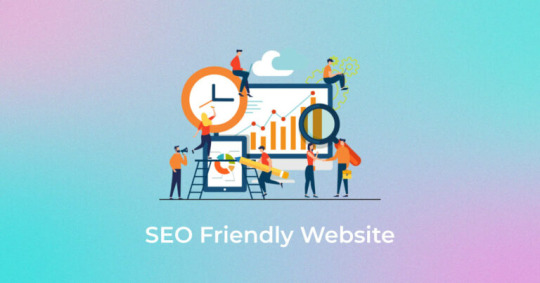#nav development tools
Explore tagged Tumblr posts
Text

9 Out-of-This-World Moments for Space Communications & Navigation in 2023
How do astronauts and spacecraft communicate with Earth?
By using relay satellites and giant antennas around the globe! These tools are crucial to NASA’s space communications networks: the Near Space Network and the Deep Space Network, which bring back science and exploration data every day.
It’s been a great year for our space communications and navigation community, who work to maintain the networks and enhance NASA’s capabilities. Keep scrolling to learn more about our top nine moments.

The SpaceX Falcon 9 rocket carrying the Dragon spacecraft lifts off from Launch Complex 39A at NASA's Kennedy Space Center in Florida on Thursday, Nov. 9, 2023, on the company's 29th commercial resupply services mission for the agency to the International Space Station. Liftoff was at 8:28 p.m. EST.
1. In November, we launched a laser communications payload, known as ILLUMA-T, to the International Space Station. Now, ILLUMA-T and the Laser Communications Relay Demonstration (LCRD) are exchanging data and officially complete NASA’s first two-way, end-to-end laser relay system. Laser communications can send more data at once than traditional radio wave systems – think upgrading from dial-up to fiber optic internet. ILLUMA-T and LCRD are chatting at 1.2 gigabits per second (Gbps). At that rate, you could download an average movie in under a minute.

NASA’s InSight lander captured this selfie on Mars on April 24, 2022, the 1,211th Martian day, or sol, of the mission.
2. Data analyzed in 2023 from NASA’s retired InSight Mars lander provided new details about how fast the Red Planet rotates and how much it wobbles. Scientists leveraged InSight’s advanced radio technology, upgrades to the Deep Space Network, and radio signals to determine that Mars’ spin rate is increasing, while making the most precise measurements ever of Mars’ rotation.

TBIRD is demonstrating a direct-to-Earth laser communications link from low Earth orbit to a ground station on Earth.
3. We set a new high record! The TeraByte InfraRed Delivery (TBIRD) payload – also demonstrating laser communications like ILLUMA-T and LCRD – downlinked 4.8 terabytes of data at 200 Gbps in a single 5-minute pass. This is the highest data rate ever achieved by laser communications technology. To put it in perspective a single terabyte is the equivalent of about 500 hours of high-definition video.

A 34-meter (112-foot) wide antenna at Canberra Deep Space Communications Complex near Canberra, Australia.
4. This year we celebrated the Deep Space Network’s 60th anniversary. This international array of antennas located at three complexes in California, Spain, and Australia allow us to communicate with spacecraft at the Moon and beyond. Learn more about the Deep Space Network’s legacy and future advancements.

An illustration of the LunaNet architecture. LunaNet will bring internet-like services to the Moon.
5. We are bringing humans to the Moon with Artemis missions. During expeditions, astronauts exploring the surface are going to need internet-like capabilities to talk to mission control, understand their routes, and ensure overall safety. The space comm and nav group is working with international partners and commercial companies to develop LunaNet, and in 2023, the team released Draft LunaNet Specification Version 5, furthering development.

The High-Rate Delay Tolerant Networking node launched to the International Space Station in November and will act as a high-speed path for data.
6. In addition to laser communications, ILLUMA-T on the International Space Station is also demonstrating high-rate delay/disruption tolerant networking (HDTN). The networking node is showcasing a high-speed data path and a store-and-forward technique. HDTN ensures data reaches its final destination and isn’t lost on its path due to a disruption or delay, which are frequent in the space environment.

The Communications Services Project (CSP) partners with commercial industry to provide networking options for future spaceflight missions.
7. The space comm and nav team is embracing the growing aerospace industry by partnering with commercial companies to provide multiple networking options for science and exploration missions. Throughout 2023, our commercialization groups engaged with over 110 companies through events, one-on-one meetings, forums, conferences, and more. Over the next decade, NASA plans to transition near-Earth services from government assets to commercial infrastructure.

Middle and high school students solve a coding experiment during NASA's Office of STEM Engagement App Development Challenge.
8. Every year, NASA’s Office of STEM Engagement sponsors the App Development Challenge, wherein middle and high school students must solve a coding challenge. This year, student groups coded an application to visualize the Moon’s South Pole region and display information for navigating the Moon’s surface. Our space communications and navigation experts judged and interviewed students about their projects and the top teams visited NASA’s Johnson Space Center in Houston!

A SpaceX Falcon 9 rocket soars upward after liftoff at the pad at 3:27 a.m. EDT on Saturday, Aug. 26, from Kennedy Space Center’s Launch Complex 39A in Florida carrying NASA’s SpaceX Crew-7 crew members to the International Space Station. Aboard SpaceX’s Dragon spacecraft are NASA astronaut Jasmin Moghbeli, ESA (European Space Agency) astronaut Andreas Mogensen, JAXA (Japan Aerospace Exploration Agency) astronaut Satoshi Furukawa, and Roscosmos cosmonaut Konstantin Borisov.
9. The Near Space Network supported 19 launches in 2023! Launches included Commercial Crew flights to the International Space Station, science mission launches like XRISM and the SuperBIT balloon, and many more. Once in orbit, these satellites use Near Space Network antennas and relays to send their critical data to Earth. In 2023, the Near Space Network provided over 10 million minutes of communications support to missions in space.
Here’s to another year connecting Earth and space.
Make sure to follow us on Tumblr for your regular dose of space!
1K notes
·
View notes
Text
youtube
Kas apkops un remontēs ķīniešu Dongfeng automašīnas ārpus Rīgas?
Nu jau vismaz mēnesi Rīgā var oficiāli iegādāties ķīniešu Dongfgeng un tā apakšzīmolu automašīnas. Tā kā mūsu autobraucēju pieredze ar ķīniešu spēkratiem pagaidām ir maza, ir daudz jautājumu par garantijām, rezerves daļu pieejamību un pēcpārdošanas apkalpošanu kopumā. Dongfeng importētāja Wess Mobility pēcpārdošanas vadītājs Nauris Zviedris mierina - tehniski dižu atšķirību no Eiropā pazīstamiem produktiem nav. Standarta garantija ir 5 gadi vai 100 000 km, bet dažiem apakšzīmoliem tā ir 150 000 km. Elektromobiļu un PHEV baterijām garantija ir 8 gadi un 160 000 km. Nākamais karstais jautājums ir par rezerves daļām. Patlaban tās pieejamas visiem modeļiem. Ātri nepieciešamās atrodas uz vietas, pārējās pasūtināmas no tikko atvērtas noliktavas Nīderlandē. Nākamie Dongfeng dīleri tiks apgādāti ar speciālajiem instrumentiem. Tieši tas pats attiecas uz servisa darbinieku apmācību, kas notiks tiešsaistē vai pat Ķīnā. Savukārt Dongfeng īpašniekam nemaz nebūs jābrauc pie dīlera, lai veiktu programmatūras atjauninājumus. Un pavisam drīz Dongfengiem būs pieejama arī lietotāja instrukcija valsts valodā. Kamēr WESS Mobility attīsta dīleru tīklu, rūpes par Dongfeng un apakšzīmolu auto apkopi uzņemsies Bosch Car Service, kas jau darbojas visā Latvijā(..)
Who will maintain and repair Chinese Dongfeng cars outside Riga [in Latvia]?
Well, for at least a month now, you can officially buy Chinese Dongfgeng and its sub-brand cars in Riga. Since the experience of our motorists with Chinese vehicles is still small, there are many questions about warranties, availability of spare parts and after-sales service in general. The after-sales manager of Dongfeng importer Wess Mobility, Nauris Zviedris, reassures us that there are no technical differences from the products known in Europe. The standard warranty is 5 years or 100,000 km, but for some sub-brands it is 150,000 km. The warranty for electric car and PHEV batteries is 8 years and 160,000 km. The next hot issue is spare parts. They are currently available for all models. Those needed quickly are on site, the rest can be ordered from a newly opened warehouse in the Netherlands. Future Dongfeng dealers will be supplied with the special tools. The same applies to the training of service personnel, which will take place online or even in China. The Dongfeng owner, on the other hand, will not need to go to the dealer for software updates at all. And very soon Dongfengs will also have a user manual in the national language. While WESS Mobility is developing the dealer network, Bosch Car Service, which already operates throughout Latvia, will take care of Dongfeng and sub-brand car maintenance (..)
#Latvia#Riga#Dongfeng#electric car#ev sales#ev adoption#Chinese EVs#Dongfeng Box#Baltic States#Youtube
3 notes
·
View notes
Text
What is the difference between HTML and HTML5?
HTML (Hypertext Markup Language) is the standard markup language used to create web pages. HTML5 is the fifth and latest version of HTML. Here are some key differences:
New Features: HTML5 introduced several new features and elements that were not available in previous versions, such as <video>, <audio>, <canvas>, <header>, <footer>, <nav>, and <article>. These elements enhance multimedia support and provide better semantic structure for web documents.
Improved Semantics: HTML5 provides better semantic markup, allowing developers to create more structured and meaningful web pages. Semantic elements like <section>, <article>, <header>, <footer>, and <nav> help in defining the structure and purpose of different parts of a web page.
Compatibility: HTML5 is designed to be backward compatible with older browsers, ensuring that web pages created with HTML5 can still be viewed and function properly on browsers that do not support HTML5 features. However, some advanced features may not be fully supported in older browsers.
Multimedia Support: HTML5 provides native support for embedding audio and video content directly into web pages using the <audio> and <video> elements, eliminating the need for third-party plugins like Adobe Flash.
Improved Forms: HTML5 introduces new input types, attributes, and validation features for forms, making it easier to create user-friendly and accessible forms without relying on JavaScript or additional libraries.
Offline Support: HTML5 includes features like the Application Cache and Web Storage, which allow web applications to work offline and store data locally on the user's device, providing a more seamless and responsive user experience.
Overall, HTML5 represents a significant advancement over previous versions of HTML, offering developers more powerful tools and capabilities for creating modern and interactive web experiences.
Read more .....
#tech#technology#computer#computer science#computer generated image#computer art#phones#old technology#computing
2 notes
·
View notes
Text
Web Dev Glow-Up: How Sites in 2025 Are Smarter, Faster & Cooler
Websites in 2025? They're no longer visual things, they are tech marvels. Let's dissect how web development has genuinely stepped up this year:
Lightning Speed, No Patience Required
Goodbye waiting time — pages load virtually in seconds
All thanks to Next.js, smart caching, and lazy loading, speed is
Progressive Web Apps (PWAs) translate to mobile sites feeling like native apps — snappy, smooth, sleek
Smarter Than Ever Before Websites are no longer static pages:
AI chatbots hear your questions and your vibe
Pages respond to you — displaying content that actually matters to you ?
Design That Makes An Impact
2025 design trends = chef's kiss
Consider: neomorphism, micro-interactions, and silky-smooth animations
Dark mode is standard, not an afterthought
Motion graphics turn every scroll into a mini movie
Privacy & Belonging Are the Default
Cool sites don't leave anyone out. Period.
Fully accessible (screen readers, keyboard nav, etc.)
GDPR-compliant and privacy-first
Designed for everyone, not just some
Built for Creators, Not Just Coders
Web dev is more creative than ever
No-code & low-code tools like Webflow, Framer, and headless CMSs let anyone build epic sites
Designers, marketers, creators — you’ve got control without touching a line of code
0 notes
Text
Common Web Development Mistakes and How to Avoid Them
Introduction
Launching a website is exciting—but in the back of the smooth user interface and flashy animations, there’s a complex web of code, content material, and strategy. And in case you're no longer careful, even the smallest internet improvement errors can hurt your web page’s overall performance, usability, and search scores.
Whether you are a business proprietor, startup founder, or aspiring developer, understanding what not to do is just as vital as understanding the satisfactory practices. In this guide, we'll spoil down the most not unusual internet development errors—and extra importantly, the way to keep away from them for a quicker, purifier, and more person-friendly website.

1. Ignoring mobile Responsiveness
The error:
constructing a site that handiest seems right on computer and falls apart on mobile.
Why it matters:
With over 60% of internet traffic coming from cell devices, a non-responsive design ends in high leap fees, poor UX, and a dip in search engine optimization scores.
A way to keep away from it:
Use responsive frameworks like Bootstrap or Tailwind CSS.
Frequently check your website online on diverse screen sizes and gadgets.
Layout with cell-first concepts—optimize for small displays earlier than scaling up.
2. Sluggish Load times
The mistake:
Heavy photographs, bloated code, and too many scripts slow your website online to a crawl.
Why it subjects:
pace is an immediate ranking thing in Google and a first-rate person revel in difficulty—traffic will depart if a web page takes greater than 3 seconds to load.
A way to avoid it:
Compress pictures the use of tools like TinyPNG or WebP.
Minify CSS, JavaScript, and HTML.
Use lazy loading and caching.
Opt for a dependable, overall performance-centered internet host.
Three. Poor Navigation shape
The mistake:
customers can’t locate what they’re searching out because of a cluttered or confusing menu.
Why it topics:
horrific navigation frustrates users, increases bounce costs, and hurts seo crawlability.
How to keep away from it:
Keep navigation easy, smooth, and predictable.
Use breadcrumb trails, a properly-based sitemap, and clear category labels.
Restriction pinnacle-level menu items to five–7 to reduce decision fatigue.
Four. Loss of seo basics
The mistake:
Skipping primary seo like identify tags, meta descriptions, and header hierarchy.
Why it topics:
engines like google want dependent records to index and rank your content material nicely.
How to keep away from it:
Implement unique title tags and meta descriptions on every page.
Use proper heading tags (H1 for titles, H2/H3 for subsections).
Add alt text to all snap shots for accessibility and seo.
Submit your sitemap to Google seek Console.
5. No longer the use of Semantic HTML
The error:
the usage of <div> and <span> for the whole thing as opposed to suitable semantic tags.
Why it subjects:
Semantic HTML improves accessibility, search engine optimization, and code readability.
A way to keep away from it:
Use tags like <header>, <footer>, <article>, <section>, <nav>.
Make your code logical and descriptive to help screen readers and seek bots.
6. Broken hyperlinks and 404 errors
The mistake:
links that lead nowhere or to removed pages.
Why it subjects:
damaged links frustrate customers and signal terrible renovation to search engines.
How to keep away from it:
Run normal audits using tools like Screaming Frog or Ahrefs.
Set up 301 redirects for moved content.
Create a custom 404 web page that facilitates users navigate some other place.
7. Inconsistent design and Branding
The error:
blending fonts, colors, or button styles across pages with out a coherent gadget.
Why it topics:
A fragmented visual identity erodes believe and professionalism.
How to keep away from it:
Create and stick to a style guide.
Use steady coloration palettes, typography, and layout components.
Adopt design systems or UI kits for higher cohesion.
8. Not Optimizing for Accessibility
The mistake:
Ignoring customers with visible, auditory, or mobility impairments.
Why it matters:
Accessibility isn't always just ethical—it's regularly legally required and complements person reach.
A way to keep away from it:
Use sufficient color evaluation.
Make certain keyboard navigability.
Upload ARIA labels and proper semantic shape.
Test with equipment like WAVE or Lighthouse.
Nine. Forgetting go-Browser Compatibility
The error:
Your web site appears outstanding in Chrome, but breaks in Safari or Firefox.
Why it subjects:
not all customers browse the equal way—your web site have to paintings seamlessly everywhere.
The way to keep away from it:
Check throughout all main browsers regularly.
Keep away from browser-particular code.
Use standardized CSS and JavaScript practices.
10. No clean call-to-action (CTA)
The error:
users don’t know what to do subsequent—subscribe, contact, or purchase.
Why it topics:
A susceptible or missing CTA kills conversions and leads.
The way to avoid it:
Vicinity clear, visible CTAs on every page.
Use actionable language: “Get started out,” “down load Now,” “communicate to Us.”
A/B take a look at CTA styles, positions, and colours for maximum effectiveness.
End
Internet improvement isn’t pretty much making something that appears accurate—it’s about developing a site that works nicely, loads speedy, ranks high, and converts site visitors. Via averting these not unusual pitfalls and applying clever, strategic fixes, you’ll construct a virtual revel in that wins over both customers and engines like google.
Don’t simply build a internet site. Build a clever, user-pleasant, seo-optimized revel in.
FAQs
1. How regularly need to I audit my website for those issues?
As a minimum as soon as every three–6 months, or after predominant updates.
2. Can i fix those mistakes myself?
A few are clean (like compressing pictures), at the same time as others may need a developer’s help.
3. What gear can assist me pick out web improvement mistakes?
Use Google Lighthouse, GTmetrix, SEMrush, or Ahrefs for targeted diagnostics.
4. What’s the most damaging mistake from this listing?
Sluggish load instances and terrible cellular responsiveness are the various most critical.
5. How do I prioritize which problems to restore first?
Consciousness on anything that influences consumer enjoy or seo—like speed, broken hyperlinks, or cell problems.
0 notes
Text
Direct Plans Surge: How Young Investors Are Shaping India’s Mutual Fund Landscape

Summary:
A new crop of Indian investors is rewriting the mutual fund playbook. Younger, technology-fluent investors are adopting direct mutual fund plans — bypassing middlemen, avoiding commissions, and employing apps to invest intelligently. This blog touches on how direct investing is picking up steam and transforming the future of India’s wealth creation.
Direct Plans Surge: How Young Investors Are Shaping India’s Mutual Fund Landscape
There was a day when investing in mutual funds required going into a financial advisor’s office and signing reams of paper. But today? It’s a matter of ordering food online — courtesy of the growth of mutual fund apps and direct plans that give investors more control.
Today’s youth investors aren’t chasing returns alone — they’re also chasing control, transparency, and low costs. And direct plans tick all these boxes.
What Are Direct Mutual Fund Plans, Anyway?
Here are the fundamentals. A direct mutual fund plan is when you put your money directly into the fund house — no distributor, no intermediary, no commission. The lack of commission translates to lower expense ratios and, long term, improved returns.
Sites such as Future Value enable easy discovery and comparison of the top mutual funds in India for both beginners and veteran investors, and invest with confidence.
Why Young Investors Are Skipping the Middleman
Gen Z and millennials desire freedom — not merely in life, but also in money. Rather than investing through a “financial advisor near me,” they’re opting to learn, research, and invest on their own through mobile-first platforms.
With free tools at their disposal, blogs, tutorials, and easy-to-understand dashboards, investing in a mutual fund no longer seems like rocket science. Direct plans are liberating an entire new generation of investors to take control of their wealth journey.
Saving on Commissions, Growing Their Wealth
One of the largest attractions of direct plans is that there’s no agent commission paid. In 10–15 years, that saved 1% every year adds up to lakhs.
Future Value, a mutual fund app that’s intelligent, identifies these differences easily for investors. It leads them to low-cost direct plans with high growth — ideal for young wage earners who are creating their financial foundation.
Tech Meets Trust: The Role of Mutual Fund Apps
Why is this transition possible? Technology. With a smartphone, anyone can discover mutual fund investment opportunities, monitor NAVs, initiate SIPs, and rebalance portfolios.
A well-crafted app like Future Value doesn’t just make investing easier — it makes it fun. No paperwork, no calling, no nudging. Just insight, notifications, and savvy suggestions, all in your pocket.
Young, Curious, and Financially Smarter
Today’s investors aren’t merely purchasing mutual funds — they’re perusing fact sheets, evaluating fund performance, and viewing YouTube explainers. They need to know what they’re purchasing and why.
Direct investing satisfies this desire. It promotes research, financial knowledge, and personal development. And though conventional mutual fund houses are still around, youngsters in India demand this value to be accessible and technology-driven.
But Do You Still Need a Financial Advisor?
Here’s the thing — direct plans don’t make financial advisors obsolete. There are moments in life when marriage, inheritance, or tax planning necessitate professional assistance. And when it arrives, it’s wonderful to have a “financial advisor near me” at hand.
But for ordinary SIPs, goal-based investing, and wealth creation in the long run, young investors are demonstrating they are more than equal to the task — provided they have a guide like Future Value.
Conclusion:
The surge in direct investment in mutual funds is not a trend — it’s a change of mindset. Young Indians desire control, lower costs, and intelligent tools. By adopting mutual fund apps and bypassing intermediaries, they’re revolutionizing wealth creation in India. With Future Value at the forefront of this movement, the future of investing is good — and it fits in your pocket.
0 notes
Text
How Financial Modelling is Revolutionizing Real Estate Investment in India
India’s real estate sector has undergone a significant transformation in recent years. With the growing presence of REITs (Real Estate Investment Trusts), increased FDI, and the shift toward data-driven investment strategies, one tool has emerged as indispensable—financial modelling.
Gone are the days when real estate investment relied purely on gut feeling or anecdotal trends. Today, investors, developers, and analysts demand accuracy, transparency, and insight. Financial modelling makes this possible, serving as the backbone of sound real estate decisions. If you’re looking to master this critical skill, enrolling in the Best Financial Modelling Certification Course in Hyderabad is a smart move that can unlock exciting opportunities in one of India’s fastest-growing sectors.
Why Financial Modelling is Essential in Real Estate
Financial modelling in real estate is the process of creating a detailed forecast of a property’s financial performance over time. Whether you're evaluating a residential apartment complex, a commercial office space, or a large infrastructure project, a well-structured model helps in:
Forecasting revenue and costs
Evaluating investment returns (IRR, NPV, ROI)
Assessing project feasibility
Performing sensitivity and scenario analysis
Securing funding from banks or investors
This structured approach reduces risk and gives stakeholders the clarity they need to make confident, strategic decisions.
Real Estate Challenges Solved by Financial Modelling
Uncertain Market Conditions:Models help simulate different scenarios—such as interest rate hikes, construction delays, or lower-than-expected occupancy—and prepare mitigation strategies.
Rising Construction Costs:With cost inflation being a serious concern in India, financial models provide detailed cost breakdowns, allowing better budgeting and forecasting.
Access to Capital:Developers use models to present transparent financials to banks and private investors, increasing trust and access to funding.
Profitability Analysis:Investors can analyze whether a property is worth investing in by evaluating expected rental income, appreciation, and resale value.
REIT Investment Planning:With REITs gaining popularity in India, retail and institutional investors use financial models to compare REITs based on yield, NAV, and distribution growth.
Real Estate Investment is Getting Smarter—and More Competitive
From Hyderabad to Gurugram, smart cities and tech hubs are driving demand for commercial and residential spaces. However, the competition among investors and developers is fierce. The winners? Those who can:
Project future cash flows accurately
Make data-driven acquisition decisions
Forecast risk with sensitivity analysis
Structure complex financing arrangements
All of this starts with mastering financial modelling—especially in a city like Hyderabad, where real estate continues to thrive.
Why Hyderabad is a Key Market for Real Estate Investors
Hyderabad has emerged as one of India’s most stable and lucrative real estate markets. With government-backed infrastructure projects, booming IT corridors, and robust demand for both commercial and residential spaces, it offers excellent investment potential.
The city’s real estate landscape is also becoming more professionalized, attracting institutional investors, NRIs, and corporates. In this environment, financial modelling has become a core competency for anyone looking to build or evaluate real estate portfolios in Hyderabad.
Why Enroll in the Best Financial Modelling Certification Course in Hyderabad?
If you're serious about making an impact in the real estate sector—whether as an investor, analyst, developer, or finance professional—investing in the right training is essential.
The Best Financial Modelling Certification Course in Hyderabad offers:
✅ Real Estate-Focused Modules
Learn how to build models specifically for real estate projects, including cash flow projections, construction timelines, leasing strategies, and ROI calculations.
✅ Hands-On Excel & Advanced Tools
Gain practical experience using Excel and other modern tools to build complex, dynamic models that adapt to market conditions.
✅ Case Studies from Indian Real Estate
Understand real-world investment scenarios based on projects in cities like Hyderabad, Mumbai, and Bangalore.
✅ Guidance from Industry Experts
Train with seasoned real estate analysts, project finance consultants, and investment bankers with experience in Indian and global markets.
✅ Certification That Enhances Your Profile
Stand out to employers, clients, or investors with a recognized certification that proves your financial modelling capabilities.
Who Should Take This Course?
Real Estate Developers
Investment Analysts
Finance Students & Professionals
Entrepreneurs & Property Investors
Construction & Project Managers
Private Equity and REIT Professionals
Whether you're working on your first project or managing a real estate portfolio, this course empowers you with the skills to assess, plan, and optimize investments like a pro.
Key Skills You’ll Master
Building real estate pro forma models
Calculating IRR, NPV, DSCR, and ROI
Conducting lease modeling & rent roll analysis
Performing market trend-based scenario analysis
Structuring debt and equity financing models
These are exactly the skills that today’s employers and investors expect from top-tier real estate professionals.
Final Thoughts: Build Smarter, Invest Smarter
In 2025 and beyond, real estate investment will favor those who can blend industry knowledge with strong analytical skills. Financial modelling bridges that gap—turning vision into strategy, and strategy into profit.
Whether you're entering the real estate field, looking to raise capital, or expanding your investment portfolio, mastering financial modelling gives you the edge.
Enroll in the Best Financial Modelling Certification Course in Hyderabad today and equip yourself with the tools to make confident, data-driven decisions in India's booming real estate market.
0 notes
Text
How Educational Mobile App Development Is Revolutionizing Online Learning in 2025

In recent years, the education sector has experienced an unprecedented digital transformation. Traditional classrooms are evolving, learning methods are changing, and mobile technology is at the forefront of it all. The rise of educational mobile app development is shaping the future of learning by making it more accessible, interactive, and personalized. By 2025, adopting mobile-first strategies will be essential.
From online learning apps to advanced AI in educational applications, today’s mobile solutions provide powerful tools that redefine how students and educators interact. This article explores the impact of e-learning mobile apps, key trends, benefits, essential features, and why now is the ideal time to invest in an educational app development company.
Why Online Learning Apps Are Leading the Future
The global demand for mobile education platforms is growing rapidly. With increased smartphone penetration and improved internet accessibility, students of all ages can now learn from anywhere at any time. Online learning apps have made this possible by offering flexible access to educational content, eliminating the need for physical classroom attendance.
Today’s students seek instant access to content that matches their pace and learning style. This demand has fueled the success of e-learning application development and mobile-based education systems worldwide.
Benefits of Educational Mobile Apps
One of the most significant advantages of e-learning mobile apps is their ability to eliminate barriers to education. With features like remote access, multilingual support, and 24/7 availability, these platforms ensure that education reaches everyone. Here are some compelling benefits:
1. Personalized Learning Experiences
Many modern apps utilize AI to deliver content tailored to each student’s performance and learning style. These personalized learning apps adapt in real-time, creating dynamic pathways that keep learners motivated.
2. Increased Student Engagement
Gamified learning, interactive quizzes, and multimedia content provide immersive experiences. This boosts student engagement and retention, making mobile apps more effective than traditional textbooks.
3. Real-Time Feedback and Analytics
With virtual learning solutions, students can receive instant feedback. Teachers can also monitor progress through built-in analytics, enabling them to address learning gaps promptly.
4. Cost-Effective Learning
Mobile learning solutions reduce costs for both institutions and learners. There’s no need for physical infrastructure or expensive printed materials; all you need is a smartphone or tablet.
Education App Development Trends in 2025

The world of EdTech app development is evolving rapidly. Here are some top trends shaping the industry in 2025:
1. Integration of AI and Machine Learning
AI is revolutionizing students' learning, from smart content recommendations to automated grading. AI in education apps helps personalize and streamline the learning process.
2.AR and VR for Immersive Learning
Augmented and virtual reality technologies are making education more interactive and hands-on. Imagine a history lesson in which students can virtually explore ancient Rome or a biology class in which they can examine 3D models of human organs.
3. Microlearning Modules
Bite-sized, topic-focused lessons are gaining popularity. The best mobile apps for online learning now offer microlearning paths, ideal for busy learners or corporate training.
4 . Voice-Enabled Interfaces
Voice search and command functionality are making mobile apps more accessible to differently-abled users and those who prefer auditory learning.
Top Features in Educational Mobile Apps
A successful educational app should prioritize user experience and learning outcomes. Here are the key features that every educational software development project should include:
User-Friendly Interface: Easy navigation and intuitive design ensure that students and teachers can use the app without confusion.
Offline Access: Essential for users in remote or low-connectivity areas.
Interactive Content: Multimedia lessons, animated videos, and gamified quizzes keep users engaged.
Push Notifications: Keep users informed about deadlines, assignments, and live classes.
Progress Tracking & Analytics: Real-time dashboards help users monitor performance, allowing educators to intervene when necessary.
The Future of Learning with Mobile Apps
The future of learning with mobile apps is not just about digital convenience; it’s about transforming the educational experience. These tools will continue to evolve into powerful learning ecosystems, connecting students, educators, and institutions in real time. Imagine smart apps that:
Predict learning outcomes using data analytics.
Offer real-time tutoring through AI-powered bots.
Utilize wearable devices to monitor student attention levels.
The potential is immense, and we are only beginning to scratch the surface.
Why Invest in E-Learning App Development in 2025?
If you're an educational institution, entrepreneur, or tech investor, now is the perfect time to partner with an educational app development company. Here’s why:
High Market Demand: The global e-learning market is expected to surpass $500 billion by 2028.
Scalability: A single app can reach thousands of students globally without physical expansion.
Long-Term ROI: Once built, apps require minimal operational costs and can generate recurring revenue through subscriptions or licensing.
By investing in e-learning app development, you're not just building a product—you’re contributing to a smarter, more connected world.
Choosing the Right Education App Developers
The success of your mobile app depends largely on the development team. Professional education app developers will understand both the technical and pedagogical needs of the app.
When selecting a development partner, look for:
A proven portfolio in educational software development
Familiarity with mobile learning solutions
Knowledge of trends in EdTech app development
Ability to integrate AI, AR/VR, and cloud-based technologies
Cost of Developing an Education Mobile App
The cost of developing an education mobile app can vary depending on factors like:
App complexity (basic, medium, advanced features)
Platform (Android, iOS, or both)
Integration of technologies (AI, AR/VR, payment gateways)
Development time and location of your team
Typically, a basic app starts from $15,000, while advanced AI-powered platforms can cost upwards of $50,000. However, with the right monetization strategy, your ROI can be substantial.
Conclusion
The shift to mobile-based education systems is no longer a trend—it's the new standard. With the increasing reliance on smartphones and digital learning, education mobile app development is crucial for staying ahead in the evolving education landscape.
From online learning apps and virtual learning solutions to personalized learning apps and AI in education apps, mobile platforms are changing how we teach and learn. As we navigate 2025 and beyond, the institutions and businesses that embrace these technologies will lead the way in delivering impactful, inclusive, and modern education experiences.
Are you ready to launch your educational app? Partner with a trusted educational app development company today and play a role in shaping the future of learning.
#Mobile App Solutions for Education#Education Mobile App Development Company#Online Learning App Development#Top E-Learning App Development Company#E-Learning App Development#Educational Mobile Application Development#EdTech App Development Services#Custom Education App Development#Build Your E-Learning App#Custom Learning Management System (LMS) App#Mobile App Development for Education#Interactive Learning App Development#Mobile Learning App Development#E-Learning Mobile Solutions
0 notes
Text
9 Mukhi Rudrakhsa
Since time immersed in Mystic, the ancient Vedic scriptures describe Rudraksha as a sacred tool of spiritual revelations, balance of energies and sacred tools of divine security. 9 Mukhi has a special Risnes D'Tray in which it symbolizes the fierce and protective energy of the slayer of Goddess Durga, universal mother and demonic forces. According to Tantric beliefs, the mere wearing of a 9 Mukhi Rudraksha induces fearlessness and vitality and these days more than ever, in a fast-paced, often stressful world, we need such energy. 🕉️ Symbols and Deities This bead is associated with the nine forms of the goddess, Nav Durga. She embodies various powers ranging from courage and wisdom to compassion and vanquishing the negativity. In benefitting from this bead, an individual will spiritually erect a protective shield from the Mother Goddess, especially useful for people who: Struggle with fear, phobia, or anxiety Face challenge in career or personal life Desire energy, self-confidence, and strength Are eminent leaders, law enforcement, or high-stress job holders 🌟 Benefits of Rudraksha 9 Mukhi: ✅ Enhances Courage and Willpower ✅ Provides Emotional Healing and Protection Against Negativity ✅ Activates Muladhara (Root Chakra) ✅ Enhances Concentration, Determination, and Grounding ✅ Invokes Energy of Divine Femininity Also, this Rudraksha is said to be most auspicious for Navratri when devotees worship the nine forms of Durga. 🔮 How-to-Use-9-Mukhi-Rudraksha For utmost benefit, the Rudraksha should preferably be worn on a Monday or in Navratri after energization (pran pratistha) and after chanting the prescribed mantras. This bead can be worn as a pendant or for wrist-wear, such that its energy is aligned close to the skin. Pre-wearing: Wash in Ganga Jal or running water. Chant the mantra: "Om Hreem Hoom Namah." Meditate for a few minutes while attuning to its vibe. 🛒 Where to Buy Authentic 9 Mukhi Rudraksha It is of utmost importance to buy Rudraksha beads from a genuine source, having spiritual recognition, in order to ensure purity and effectiveness. 👉 You can buy genuine, energized 9 Mukhi Rudraksha from: 🔗 https://www.shaligram.com/9_Mukhi_Rudraksha-2-29-1.php1 Shaligram.com sells lab-certified Rudrakshas, energized by Vedic experts, with global delivery. 🌺 Conclusion The 9 Mukhi Rudraksha is not merely a spiritual ornament; its role is deeper as an internal tool for developing strength, fearlessness, and a divine connection. In the face of turmoil, keeping the blessings of Durga Maa close to the heart works as a reassurance that an individual is always protected, directed, and empowered. May this divine bead give you courage and clarity on your path! Durga Maa ki Jai! 🙏
#9 Mukhi Rudraksha#Rudraksha benefits#spiritual jewelry#Durga#Navdurga#Hindu spirituality#energy healing#meditation tools#vedic astrology#3sacred beads
0 notes
Text
BNY launches a new Blockchain accounting tool with Blackrock as a first customer
On Thursday, the Giant Bank in New York announced the latest encryption offer: a tool that provides updated data on net asset value, or NAV directly on Blockchain. This reflects the increasing development of a new group of distinctive money run by companies such as BlackrockWhich will be the first to use the new BNY tool. The launch is a new battle by BNY in the volatile Blockchain sector, which…
0 notes
Text
Crafting SEO-Friendly Websites: A Developer’s Roadmap to Visibility

In today’s digital ecosystem, a website’s success hinges not just on sleek design or functionality, but on its ability to be found. For developers, weaving SEO into the fabric of your build process isn’t optional—it’s critical. At CodingNectar.com, we’ve seen how SEO-savvy development drives traffic and growth. Let’s break down how to engineer websites that both users and search engines love.
1. Architect with SEO in Mind
A website’s structure is its backbone. Imagine constructing a skyscraper: without a blueprint, chaos ensues.
Flat Architecture Wins:
Keep pages within 3–4 clicks from the homepage for easy crawling.
Avoid orphan pages—every page should link back to your main navigation.
URLs That Speak Clearly:
Ditch cryptic strings like /page123. Opt for descriptive paths (e.g., /guides/seo-for-devs).
Use hyphens (-) to separate words—search engines read them as spaces.
Pro Tip: Tools like Screaming Frog act as X-ray goggles, uncovering broken links or duplicate content.
2. Nail Technical SEO Foundations
Think of technical SEO as the plumbing—it’s invisible but essential.
Mobile-First Isn’t a Trend, It’s a Rule:
Use responsive frameworks (e.g., Bootstrap) and test with Google’s Mobile-Friendly Tool.
Speed Is Non-Negotiable:
Compress images to WebP format (tools: ImageOptim).
Minify CSS/JS files and leverage browser caching.
Guide Search Engines:
Generate an XML sitemap.
Block irrelevant pages (e.g., test environments) via robots.txt.
3. Semantic HTML: SEO’s Best Friend
Clean code isn’t just for developers—it’s a love letter to search engines.
HTML5 Tags Are Your Allies:
Use <header>, <nav>, and <article> to add context.
Headings Hierarchy Matters:
One <h1> per page (your title), followed by logical <h2>-<h6>.
Alt Text: Describe, Don’t Keyword-Stuff:
alt="developer optimizing website speed" beats alt="SEO tips".
4. Ace Core Web Vitals
Google’s user experience metrics can make or break your rankings.
Largest Contentful Paint (LCP):
Target <2.5 seconds. Optimize hero images and lazy-load offscreen content.
First Input Delay (FID):
Defer non-critical JavaScript.
Cumulative Layout Shift (CLS):
Reserve image/video space with width and height attributes.
Test Tools: Google PageSpeed Insights and Lighthouse are your go-to auditors.
5. Content: Where Code Meets Strategy
Developers wear many hats—content strategist included.
Keyword Research:
Tools like Ahrefs uncover gems (e.g., “optimize Angular SEO” vs. generic terms).
SPA Challenges:
Use server-side rendering (Next.js/Nuxt.js) for React/Angular apps.
Canonical Tags:
Fix duplicate content with <link rel="canonical" href="https://your-primary-url">.
6. Security & Accessibility: SEO’s Silent Allies
HTTPS is Mandatory:
Free SSL via Let’s Encrypt boosts trust and rankings.
Accessibility Enhances SEO:
ARIA labels (e.g., aria-label="Contact form") aid screen readers and search bots.
7. Structured Data: Speak Google’s Language
Schema markup helps search engines “get” your content.
JSON-LD Example:
html
Copy<script type="application/ld+json"> { "@context": "https://schema.org", "@type": "Guide", "name": "SEO for Developers", "author": "CodingNectar.com" } </script> Run HTML
Validate with Google’s Structured Data Tool.
8. Monitor, Tweak, Repeat
SEO is a marathon, not a sprint.
Track Progress:
Google Search Console reveals crawl errors and keyword performance.
Moz or Ahrefs monitor rankings.
Fix Issues Promptly:
Redirect broken links (301s) and refresh stale content.
Avoid These SEO Blunders
Neglecting Mobile: Most searches happen on phones.
JavaScript Overload: Heavy scripts slow crawlers.
Duplicate Content: Canonical tags are your safety net.
Cheap Hosting: Slow servers = lost rankings.
Final Take: SEO is Part of Your Code
Building SEO-friendly sites isn’t about gaming algorithms—it’s about creating fast, accessible, and intuitive experiences. By embedding SEO into your development DNA, you’ll future-proof your work and unlock organic growth. At CodingNectar.com, we’ve turbocharged rankings for everyone from startups to Fortune 500s by merging technical rigor with SEO strategy.
Ready to code your way to the top? Start with SEO in your toolkit—your analytics will thank you.
0 notes
Text
Best Laptops & Tablets for Kids' Learning & Play
Technology is now a huge part of children’s learning and entertainment. Laptops and tablets designed for kids offer a safe, educational, and fun way to explore digital learning, creativity, and entertainment. Whether your child needs a device for online classes, educational apps, gaming, or creative activities, finding the right laptop or tablet is essential.
If you’re looking for the best kid-friendly laptops and tablets, we’ve compiled a list of the top-rated devices that provide a balance of learning, entertainment, and safety. You can also check out a variety of kid-friendly gadgets at Nav Emporium to find the perfect device for your little one!

Why Choose a Laptop or Tablet for Kids?
Gadgets aren’t just for entertainment anymore—they are powerful learning tools. Here’s why investing in a child-friendly laptop or tablet is a smart move:
✔ Enhances Learning – Access to educational apps, e-books, and interactive lessons. ✔ Boosts Creativity – Encourages art, coding, and problem-solving activities. ✔ Improves Digital Skills – Helps kids develop early computer literacy. ✔ Portable & Convenient – Lightweight and travel-friendly for learning on the go. ✔ Parental Controls – Built-in safety features ensure secure browsing and app usage.
💡 Pro Tip: Choose a device with durability, long battery life, and kid-friendly software.
Best Tablets for Kids' Learning & Play
1. Amazon Fire HD 10 Kids Edition
✔ Best for young kids ✔ Durable & comes with a kid-proof case ✔ Includes parental controls & age-appropriate content
The Amazon Fire HD 10 Kids Edition is one of the best tablets for young learners. It includes a one-year subscription to Amazon Kids+, which offers thousands of books, games, and videos tailored for different age groups. The rugged case and 2-year worry-free guarantee make it ideal for kids.
🔹 Best For: Ages 3-10 years 🔹 Battery Life: Up to 12 hours 🔹 Screen Size: 10.1-inch HD display
💡 Parental Tip: Use the Amazon Parent Dashboard to set screen time limits and control content.
2. Apple iPad (9th Gen, 2021)
✔ Best for older kids & students ✔ Powerful for schoolwork & creativity ✔ Supports Apple Pencil & keyboard attachment
The Apple iPad is a fantastic all-around tablet for learning, drawing, and entertainment. With Apple Pencil support, kids can take handwritten notes, draw, and engage in creative projects. It’s also perfect for Zoom classes, research, and coding.
🔹 Best For: Ages 7+ years 🔹 Battery Life: Up to 10 hours 🔹 Screen Size: 10.2-inch Retina display
💡 Learning Tip: Download apps like Procreate, Duolingo, or ScratchJr for fun educational activities.
3. Samsung Galaxy Tab A8 Kids Edition
✔ Affordable & family-friendly ✔ Great for reading & light gaming ✔ Kid-safe browsing & parental controls
The Samsung Galaxy Tab A8 Kids Edition is an excellent choice for families looking for a budget-friendly, yet high-quality tablet. It has a kid-friendly interface, long battery life, and access to the Google Play Store for learning apps and games.
🔹 Best For: Ages 6+ years 🔹 Battery Life: Up to 13 hours 🔹 Screen Size: 10.5-inch TFT display
💡 Extra Fun: Enable Samsung Kids Mode to create a safe digital environment for your child.
4. LeapFrog LeapPad Academy
✔ Best for preschoolers & early learners ✔ Includes preloaded educational apps ✔ Durable, drop-resistant design
For toddlers and preschoolers, the LeapFrog LeapPad Academy is an excellent learning-first tablet. It’s designed with young learners in mind, featuring interactive games, educational videos, and early STEM activities.
🔹 Best For: Ages 3-6 years 🔹 Battery Life: Up to 7 hours 🔹 Screen Size: 7-inch touch display
💡 Bonus Feature: The LeapPad comes with preloaded content, so kids can start learning right away without internet access.
Best Laptops for Kids' Learning & Schoolwork
5. Lenovo Chromebook Duet
✔ Best for school & remote learning ✔ Detachable keyboard for laptop & tablet mode ✔ Affordable & lightweight
The Lenovo Chromebook Duet is a 2-in-1 device that functions as both a tablet and a laptop. It’s perfect for kids who need a portable and versatile device for schoolwork, research, and creativity.
🔹 Best For: Ages 8+ years 🔹 Battery Life: Up to 10 hours 🔹 Screen Size: 10.1-inch FHD display
💡 School-Friendly Feature: Comes with Google Classroom & G Suite apps preinstalled!
6. Microsoft Surface Go 3
✔ Perfect for older kids & students ✔ Works as a laptop & tablet ✔ Supports Surface Pen for writing & drawing
The Microsoft Surface Go 3 is a compact and powerful laptop-tablet hybrid. It’s great for school assignments, digital drawing, and online learning. The Windows operating system makes it ideal for students who need Microsoft Office, research tools, and video conferencing apps.
🔹 Best For: Ages 10+ years 🔹 Battery Life: Up to 11 hours 🔹 Screen Size: 10.5-inch PixelSense display
💡 Learning Tip: Use the Surface Pen for note-taking and interactive math apps!
7. Acer Chromebook Spin 311
✔ Best budget laptop for kids ✔ Convertible 2-in-1 touchscreen ✔ Fast, secure, and kid-friendly
The Acer Chromebook Spin 311 is an affordable, durable, and lightweight laptop for kids. It features a touchscreen, 360-degree hinge, and Chrome OS for easy access to Google apps, YouTube Kids, and online learning platforms.
🔹 Best For: Ages 7-12 years 🔹 Battery Life: Up to 16 hours 🔹 Screen Size: 11.6-inch HD touchscreen
💡 Parental Control Tip: Use Google Family Link to manage screen time and filter content.
Final Thoughts
Choosing the right laptop or tablet for kids depends on their age, learning needs, and interests. Whether they need a device for school, creative projects, or safe entertainment, the Amazon Fire HD Kids Edition, iPad, Surface Go, or Lenovo Chromebook Duet are fantastic choices.
For a wide range of kid-friendly laptops, tablets, and learning gadgets, visit Nav Emporium and find the best tech for your child’s education and fun!
💬 Which laptop or tablet does your child use? Share your thoughts in the comments!
Tags:
#KidsTablets #EducationalTech #BestLaptopsForKids #STEMLearning #SmartLearning #TabletsForKids #SchoolTech #InteractiveLearning #TechForKids #NavEmporium
0 notes
Text
Web Designing 101: Everything You Need to Know as a Beginner
Introduction
In case you've ever wondered how web sites go from clean pages to sleek, interactive stories, you have stepped into the world of web designing. From the format and shades to the fonts and navigation, net layout shapes how customers sense and engage online. In today’s digital-first international, know-how the fundamentals of net layout is essential—now not only for designers however for all and sundry who wants to launch a website with cause and varnish.
Whether or not you are an entrepreneur, innovative, or someone seeking to pick up a valuable skill, this guide will walk you via the crucial factors of net layout, display you the equipment you want, and assist you begin constructing web sites which might be each lovely and useful.
1. What exactly Is net design?
Internet design is greater than simply making things look pretty—it’s bridging aesthetics with usability:
Visual layout (UI): choosing colorings, typography, and layouts that engage customers and bring brand identity.
User revel in (UX): Crafting intuitive and exciting navigation paths thru the web site.
Responsive layout: making sure the web page works properly on laptop, pill, and cell gadgets.
Interaction layout: Incorporating animations, buttons, and comments to make the site sense alive.
🧩 Why internet design matters
First Impressions matter: A smooth, professional site builds agree with right away.
Better Engagement: nicely-designed websites encourage customers to stay longer, discover greater—because of this higher conversions.
Seo pleasant: clean code and mobile responsiveness assist your site get located via engines like google.
Stick out from the gang: precise, well-designed sites assist you stand aside in a crowded online space.
2. The net Designing technique: A Step-through-Step manual
Right here’s a newbie-pleasant roadmap to approach your net design adventure:
A. Research & planning
Define Your goals: Do you want to showcase a portfolio, promote products, or proportion content?
Recognise Your audience: who're they, what troubles do they've, and how do they seek on line?
Competitor analysis: discover strengths and weaknesses in competitors' web sites to set your USP!
B. Wireframing & layout
Caricature the structure: Use tools like Figma, comic strip, or Adobe XD—or maybe pen and paper—to map out pages.
Focus on Hierarchy: arrange content material to manual attention, placing CTAs where they naturally belong.
Make sure White space: deliver your layout room to respire—litter overwhelms.
C. Visible layout (UI design)
Pick a shade Scheme: A number one palette of two–three colorings maintains the layout unified. Use gear like Coolors or Adobe color for notion.
Pick web-secure Fonts: Pair a serif header with a sans-serif frame; Google Fonts is a first-rate free supply.
Include Imagery: Use satisfactory pictures or icons (Unsplash, Pexels, Flaticon) to make your format pop.
D. Responsive layout
Mobile-First technique: layout for the smallest display screen first, then scale up.
Trying out across devices: Use browser tools or preview in actual devices to ensure your web site works anywhere.
Bendy factors: keep away from fixed width—use percent-based totally sizing and bendy grids.
E. Development basics
HTML for structure
html
CopyEdit
<header><h1>web site title</h1></header>
<nav>…</nav>
<main>…</main>
<footer>…</footer>
CSS for style
css
CopyEdit
Body font-own family: Arial, sans-serif; history: #f8f8f8;
Header heritage: #003366; color: white; padding: 20px;
Optional: JavaScript for Interactivity
Show/cover content, animate buttons, reply to person actions
F. Checking out & Refinement
Pass-Browser exams: make sure it looks correct on Chrome, Firefox, Safari, and side.
Usability assessments: Ask actual people to test it—look ahead to confusion, damaged hyperlinks, or gradual pages.
Performance checks: Use Google PageSpeed Insights and GTMetrix to optimize load time.
G. Launch & preservation
Use a reliable Host: alternatives variety from Bluehost and SiteGround to cloud solutions like AWS.
Select a CMS: WordPress, Webflow, or maybe headless CMS depending in your desires.
Monitor & enhance: Use analytics equipment to track overall performance and refine primarily based on real facts.
Three. Critical tools each newbie need to recognize
Layout & Prototyping
Figma: loose collaboration with effective UI equipment.
Adobe XD: tremendous for prototyping and interaction-heavy designs.
Cartoon: A macOS favourite—easy however effective.
Improvement
VS Code: A free, extensible code editor with heaps of beneficial plugins.
Browser DevTools: best for actual-time edits and debugging.
Git + GitHub: version manage way to song adjustments and collaborate.
Portraits & images
Canva: smooth tool for simple banners or social photos.
Unsplash/Pexels: terrific unfastened pictures.
TinyPNG: Compress pictures with out dropping first-rate.
Fonts & Icons
Google Fonts
Font terrific or Flaticon
Overall performance & checking out
Google PageSpeed Insights
GTMetrix
Google Analytics
Four. Middle layout standards every clothier ought to comply with
Visual Hierarchy
Highlight crucial factors (headlines, CTAs) the use of length, colour, and site.
Alignment & clarity
Steady spacing across elements maintains your layout balanced.
Consistency
Repeating design patterns builds familiarity and accept as true with.
Accessibility
Alt text for pix
Keyboard navigation
Colour contrast ratios (use equipment like WebAIM contrast checker)
Comments
Make certain buttons and inputs respond (hover styles, click animations) so customers understand what’s happening.
Five. Not unusual errors novices ought to keep away from
Litter Overload: Too many fonts, snap shots, and buttons confuse customers.
Ignoring cellular: laptop-most effective web sites frustrate most people of cellular visitors.
Slow Load times: massive pics or heavy scripts force users away.
Terrible clarity: Tiny fonts, low assessment, and lengthy paragraphs harm consumer experience.
Broken hyperlinks & Typos: Small errors break credibility.
6. Studying & developing: What’s subsequent After the fundamentals?
Be part of on-line publications: Coursera, Udemy, or freeCodeCamp have notable tutorials.
Construct a Portfolio: Create small initiatives like a non-public web page, landing pages, or event microsites.
Observe other web sites: analyze top manufacturers and nearby competition—what works and why?
Study a CSS Framework: discover Bootstrap or Tailwind for faster, cleanser code.
Iterate & update: Your first website isn’t your ultimate—hold refining as you learn.
Conclusion
Net design is a blend of art and technology—stability visuals with usability to create stories human beings enjoy. With this manual, you have got the fundamentals covered: making plans your site, learning the equipment, know-how format and visuals, building and trying out your design, and launching it live.
The nice component? Web layout is a adventure of continual boom. Practice regularly, collaborate with others, and keep refining your capabilities. Destiny you'll thanks for starting now.
FAQs
1. Do I need to learn coding to be a web clothier?
Not continually—tools like Webflow or Wix permit you to layout visually. However knowing HTML/CSS allows you customise and stand out.
2. Am i able to layout on cell devices?
It is better to use computing device for layout work. Mobile tools exist, however actual layout paintings desires display screen area and precision.
3. How long does it take to build a basic web site?
Easy portfolio or brochure web sites can take some days. More complicated designs and CMS integration might also take some weeks.
4. Ought to I begin with a non-public assignment or purchaser paintings?
Start with personal or pattern tasks—no deadline stress—then show off them on your portfolio to attract actual customers.
Five. Where can i get feedback on my design paintings?
Join communities like Dribbble, Behance, Reddit’s r/web_design, or facebook/Webflow corporations to acquire critique and enhance quicker.
0 notes
Text
Artificial Super Intelligence: Preparing for the Future of Human-Technology Collaboration
New Post has been published on https://thedigitalinsider.com/artificial-super-intelligence-preparing-for-the-future-of-human-technology-collaboration/
Artificial Super Intelligence: Preparing for the Future of Human-Technology Collaboration
Artificial Intelligence (AI) is advancing faster than ever, and now, the idea of Artificial Super Intelligence (ASI) is moving from science fiction into a possible future. ASI is a form of intelligence that outperforms human abilities in almost every field, from scientific discovery to social interactions. Unlike today’s AI systems, which are designed for specific tasks, ASI would be capable of handling any intellectual task that humans can do—and even surpass them in certain areas.
The fast progress in AI technologies like machine learning, neural networks, and Large Language Models (LLMs) is bringing us closer to ASI. This development in technological capability offers significant opportunities but also several challenges. ASI could transform industries, solve complex global issues, and enhance the lives of billions. However, it also brings serious ethical, economic, and security risks that could destabilize societies if not carefully managed.
ASI can potentially transform our world significantly, so it is essential to begin now rather than later. Therefore, governments and organizations worldwide must take proactive steps to ensure ASI development aligns with humanity’s greater good. This means putting in place the right regulations, investing in research and development, and working together internationally to ensure that ASI grows ethically and safely.
Understanding Artificial Super Intelligence (ASI)
ASI represents a future where AI surpasses human intellect in every way. This development differs from Artificial Narrow Intelligence (ANI), which handles specific tasks, and Artificial General Intelligence (AGI), which aims to replicate a wide range of human cognitive abilities.
Technologies such as chatbots and recommendation systems exemplify ANI, which is designed to execute specific, narrowly focused tasks. AGI, still under development, seeks to create machines that can think, learn, and comprehend a variety of functions like human abilities. ASI aims to exceed human capacities in creativity, decision-making, and problem-solving.
Advancements in technologies like neural networks, which are vital for deep learning due to their design inspired by the human brain, are playing an essential role in the development of ASI. LLMs such as GPT have demonstrated the capability to generate human-like text and understand complex contexts. These advancements are accelerating the transition from AGI to ASI and highlight the importance of monitoring their development and the broader implications they may have.
Recent updates show that AI capabilities are expanding rapidly. For instance, modern AI systems now perform complex problem-solving tasks that once required human input. In healthcare, AI-enhanced diagnostic tools have proven more efficient and accurate than traditional methods used by human practitioners.
As AI technology continues to advance, understanding its implications is essential. The development of ASI offers vast opportunities and raises ethical questions and potential changes in society, highlighting the need for thoughtful consideration and regulation. This approach will ensure that ASI develops ethically and beneficially for society.
Possible Impacts of Artificial Super Intelligence
ASI has the potential to affect many areas of life significantly. While ASI is still a concept, current AI technologies already show signs of what it might become. Technologies such as self-driving cars, healthcare AI, personal assistants, and recommendation systems are performing increasingly complex tasks, showing how ASI could function.
For example, self-driving cars like Tesla use AI to make decisions and navigate safely, showing how advanced AI can solve real-world problems. AI systems like IBM Watson Health help doctors analyze data to make faster and more accurate diagnoses. Personal assistants like Siri and Alexa are becoming better at understanding and responding to people, and platforms like Netflix use AI to suggest content based on user preferences.
Looking to the future, ASI could make huge differences in many fields. In healthcare, it could help doctors diagnose diseases and create personalized treatments faster. In space exploration, it could assist in planning missions, managing resources, and making decisions that humans may not be able to. In emergencies like natural disasters or nuclear incidents, ASI could manage operations more effectively, reducing the risks of human involvement.
However, ASI also brings challenges. Economically, it could help industries like healthcare, finance, and logistics become more efficient. According to Goldman Sachs, up to 300 million full-time jobs globally could be lost due to AI automation by 2030. While new jobs may be created, it is essential to ensure that the benefits of ASI are shared relatively so that it does not widen economic gaps.
On a social level, ASI could change how we live and work. AI-driven personal assistants could manage our daily routines, making life easier and more organized. However, this may increase dependence on technology and raise privacy concerns. For instance, predictive policing algorithms used by law enforcement can disproportionately impact marginalized communities due to biases in data collection. ASI’s integration into everyday life might change how we make decisions and interact with each other, which will require careful thought about its social effects.
Addressing Complexities of ASI Development
ASI brings immense potential but also significant risks that need careful attention. Ethical concerns, such as privacy violations, biased decision-making, and the potential loss of human autonomy, are critical. The ability of ASI to make independent decisions poses serious questions about control and accountability. For instance, determining responsibility can be challenging if an ASI system makes a decision leading to negative consequences.
Security risks are another primary concern. ASI could be exploited for harmful purposes, including cyberattacks or the development of autonomous weapons. The possibility of such misuse makes it essential to implement strong security measures. Ensuring that ASI systems are protected from hacking and unauthorized use is critical to prevent scenarios where they could cause harm.
Regulatory challenges are equally complex to handle. Governments must balance promoting innovation and establishing regulations that prevent misuse. Introducing these regulations is complex due to AI technologies’ rapid development and global impact. International cooperation is necessary to create a consistent regulatory framework that addresses the challenges ASI poses worldwide.
To tackle these challenges, governments should develop comprehensive policies guiding ASI’s development and social integration. This includes creating regulatory frameworks to ensure ASI is used ethically and safely. Clear guidelines should be established for ASI use, focusing on transparency, accountability, and ethical considerations.
Investing in research and development is also essential. By funding AI projects, governments can encourage innovation while monitoring how the technology evolves. Public investment ensures that ASI advancements are aligned with societal values and public interests. International collaboration is also vital. Since ASI will have worldwide effects, countries need to work together on regulations and ethical standards to avoid an uncoordinated and risky situation. Governments should liaise to establish global agreements and guidelines for the development and use of ASI.
Organizations also play an essential role in getting ready for ASI. Setting up AI ethics committees can help steer the ethical creation and use of ASI, tackling issues like bias, privacy, and accountability. Companies can ensure their ASI systems match societal values by making ethics a part of the development process.
Training employees is another essential step. As AI becomes more integrated into daily tasks, workers need new skills to collaborate effectively with these technologies. This helps protect jobs and boosts productivity. Organizations should focus on ongoing learning and development programs to help their staff adjust to the changing tech environment.
Adapting and innovating is critical for businesses to stay competitive. By using ASI, companies can fuel growth and efficiency, ensuring they stay ahead in the fast-paced tech world. Exploring new business models and opportunities that ASI offers can position them as industry leaders.
The Bottom Line
As ASI becomes a more tangible possibility, it is clear that we need to act now to shape its development responsibly. ASI could revolutionize many aspects of our lives, offering solutions to global challenges and enhancing industries, healthcare, and everyday conveniences.
However, with such power comes the need for caution. The ethical, economic, and security concerns surrounding ASI require careful planning and regulation. Governments, organizations, and individuals must collaborate to set the right policies, invest in research, and create ethical guidelines that keep ASI in check.
By taking these steps, we can ensure that ASI benefits everyone, creating a future where technology enhances human life without compromising our values or safety.
#AGI#ai#AI Ethics#AI ethics and safety#AI in industries#AI regulation and policy#AI systems#AI technology#alexa#Algorithms#approach#artificial#Artificial General Intelligence#Artificial Intelligence#Artificial Super Intelligence#asi#ASI technology#attention#automation#autonomous#Bias#biases#Brain#Business#Cars#change#chatbots#cognitive abilities#collaborate#Collaboration
1 note
·
View note
Text
Microsoft NAV Implementation Partner: Empowering Your Digital Evolution with Preeminent Softcom
Microsoft dynamics NAV services | Microsoft Dynamics NAV Providers in India | Microsoft Dynamics NAV Implementation Partner in Noida
In today's data-driven market, businesses want more than simply off-the-shelf software; they require intelligent, flexible solutions that are adapted to changing business objectives. That is why selecting the appropriate Microsoft NAV implementation partner is critical to ERP success. Preeminent Softcom provides more than just ERP rollouts; we enable digital transformation through targeted Microsoft Dynamics NAV solutions that correspond with your long-term business goals. From initial consultation to post-deployment assistance, we serve as real partners, ensuring that every module, process, and integration adds to your organization's development and stability.

Why Microsoft Dynamics NAV?
Microsoft Dynamics NAV—now part of the Dynamics 365 portfolio under Business Central—is a strong, flexible ERP system designed primarily for small and medium-sized businesses. It enables organizations to simplify finance, manage supply chain operations, and improve customer connections all through a single system. To fully realize its potential, organizations require the assistance of a qualified Microsoft NAV implementation partner—one who can customize the platform to meet their specific goals, workflows, and industry needs.
Preeminent Softcom: A Strategic Microsoft NAV Implementation Partner
We don’t believe in “install and exit.” At Preeminent Softcom, we understand that technology is only as powerful as its implementation. With over 16 years of experience and thousands of successful deployments, we’ve earned a reputation for precision, professionalism, and performance.
Key Differentiators:
1. Domain-Driven Expertise
ERP isn’t just IT—it’s business transformation. Our consultants bring deep industry knowledge across manufacturing, retail, logistics, professional services, and more. This allows us to customize Microsoft NAV not just technically, but strategically—so that it supports your workflows, compliance needs, and competitive edge.
2. Tailor-Made NAV Implementations
Every company is different. We design NAV systems around your business architecture—not the other way around. Our implementations include workflow optimization, custom dashboards, automation of repetitive tasks, and integrations with existing platforms.
3. Structured Yet Agile Approach
We balance structure with adaptability. Our implementation methodology includes:
Discovery and business analysis
Solution design and prototyping
Customization and development
Data migration and system testing
Staff training and user enablement
Go-live and continuous support
Every phase is transparent, collaborative, and aligned with clear KPIs.
Full-Cycle Microsoft NAV Services Under One Roof
As a dedicated Microsoft NAV implementation partner, Preeminent Softcom goes beyond deployment. We offer a 360-degree service suite that ensures you’re supported at every stage of your ERP journey.
Pre-Implementation Services:
ERP Readiness Assessments
Solution Architecture Planning
Cost-Benefit Analysis and Roadmapping
Implementation Services:
NAV Installation and Setup
Process Automation and Custom Development
Third-party Tool Integration (CRM, e-commerce, analytics)
Post-Go-Live Services:
Performance Optimization
User Support and System Training
Upgrades, Enhancements & Compliance Tuning
Global Reach with Local Sensitivity
Preeminent Softcom operates in important areas such as India, Japan, China, Hong Kong, and Taiwan, providing global-grade Microsoft NAV solutions tailored to local conditions. Whether it's complying with regional tax systems or providing language assistance for cross-border teams, our experts understand how to localize without sacrificing functionality.
Thinking Ahead: NAV to Business Central Migration
Still using an earlier version of Microsoft Dynamics NAV? As Microsoft transitions to Dynamics 365 Business Central, upgrading becomes unavoidable—not just for support continuity, but also for competitive advantage.
Preeminent Softcom provides smooth migration services that upgrade your ERP stack without disrupting business operations. Our upgrading procedure involves:
Legacy System Assessment and Gap Analysis
Data Cleansing and Safe Migration
Custom Function Replication in Business Central
Staff Training on New Features and Interfaces
Cloud or On-Premise Deployment Based on Your Preference
The ROI of Working with Preeminent Softcom
When you choose Preeminent Softcom as your Microsoft NAV implementation partner, you’re investing in more than an ERP system—you’re investing in outcomes. Our clients consistently report:
Faster Month-End Closings
Accurate Forecasting and Budget Planning
Improved Order Fulfillment Rates
Streamlined Multi-location Inventory Management
Time Savings through Automation
Conclusion
Digital transformation begins with the right partner, not software. At Preeminent Softcom, we don't simply integrate Microsoft Dynamics NAV; we also maximize its potential to meet your unique business requirements. As a recognized Microsoft NAV implementation partner, we assist businesses in reducing costs, improving performance, and confidently planning for the future. Whether you're establishing a new ERP system or transitioning to Business Central, our bespoke strategy guarantees long-term value. Choose Preeminent Softcom—where strategy and innovation intersect, and change begins at the root of everything. Contact us
#microsoft nav implementation partner#microsoft dynamic nav provider in India#microsoft dynamic nav implementation partner in noida
0 notes